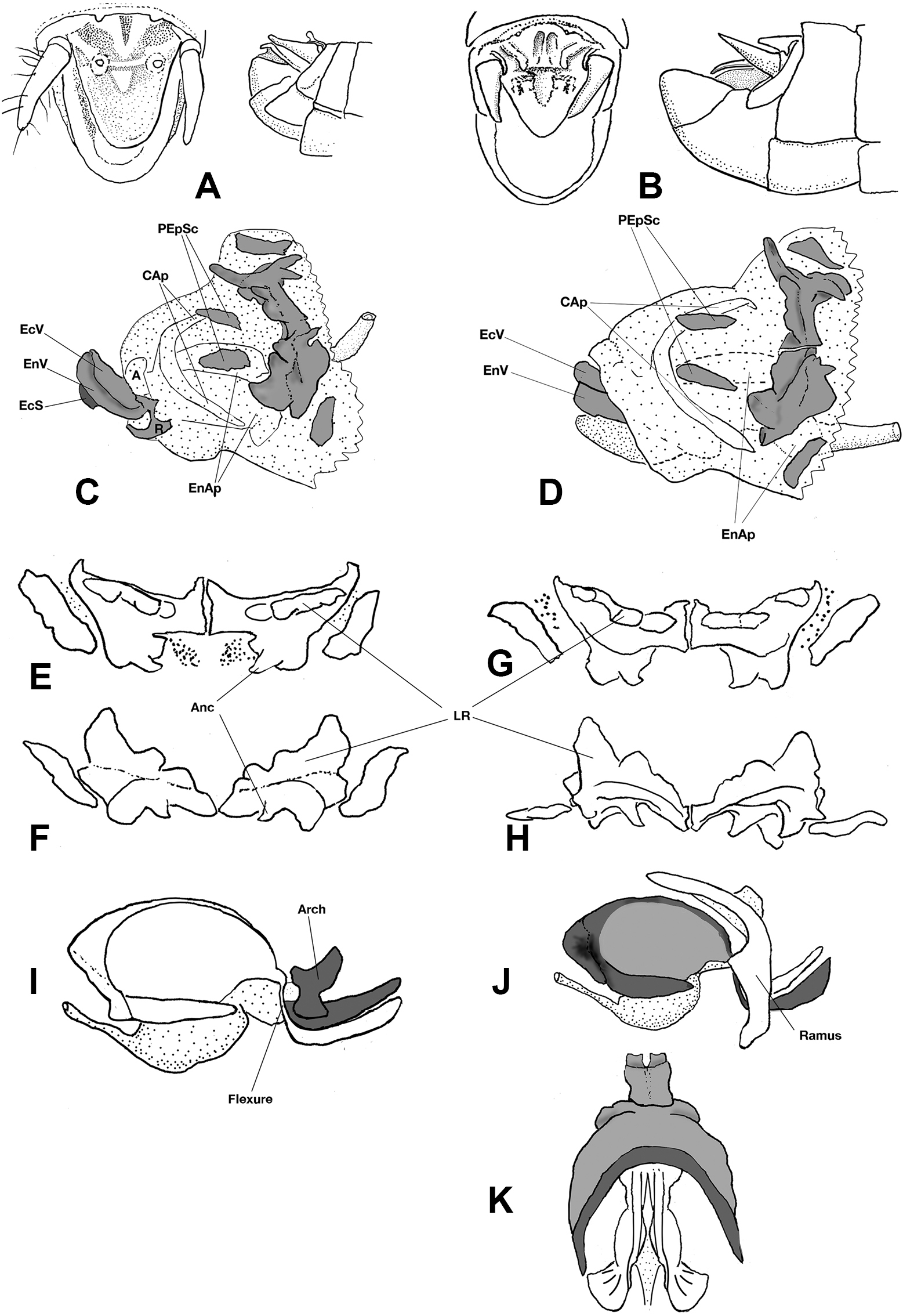
|
||
|
A, C, E, F, and I are Burttia sylvatica; B, D, G, H, J, and K are B. caerulea sp. nov. A. Burttia sylvatica, male terminalia in dorsal and lateral views; B as A but B. caerulea sp. nov.; C. (B. sylvatica); and D. (B. caerulea sp. nov.). Oblique dorso-lateral view of entire phallic complexes. Membrane is shown dotted. The shaded sclerites are the epiphallus and its lateral “oval” sclerites (unlabelled, at the right-hand edge of each figure), the paired post-epiphallic sclerites (PEpSc), the right-hand side ectophallic ramus (R) in C only, and the aedeagal valves (EcV, ectophallic (dorsal) aedeagal valve; EnV, endophallic (ventral) aedeagal valve; EcS, fragment of ectophallic sheath left adhering to ventral valve during dissection). The remaining sclerites are indicated only by outlines, indistinctly visible through the membrane (A, arch; CAp, cingular apodemes; EnAp, endophallic (basal) apodemes). E, F. Burttia sylvatica, epiphallus; E. dorsal view; F. axial view. Note trilobed lophal ridge (LR), divided epiphallic bridge, and large irregularly shaped “oval” sclerites and inwardly directed ancorae (Anc). G and H as E and F but B. caerulea sp. nov. Phallic complex with ectophallic membrane, zygoma, cingulum, and rami removed to expose the arch and the endophallic flexure. Arch and LHS ectophallic valve shaded. J. Burttia caerulea sp. nov. Phallic complex with ectophallic membrane removed, showing endophallus, cingulum with LHS ramus and LHS ectophallic valve. Endophallus shaded. K as J but dorsal view. Ectophallic elements shaded. |